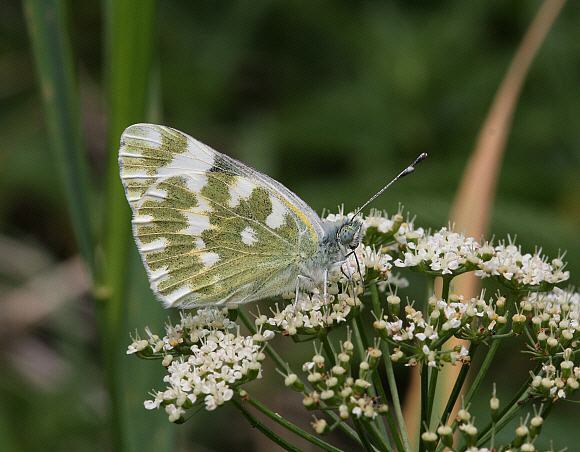 Pontia edusa, B�kk hills, Hungary, – Peter Bruce-Jones
Pontia edusa, B�kk hills, Hungary, – Peter Bruce-Jones
Introduction
The taxonomy of the genus Pontia is contentious with some authorities considering there to be as many as 10 species, while others regard edusa and chloridice to be subspecies of daplidice or mere synonyms of that species. Further confusion arises because the Peak White Synchloe callidice is also included in Pontia by many workers.
Pontia is represented in all continents except North America and Australasia. The most widespread and abundant species is daplidice. It occurs in Morocco, Algeria, Tunisia, the Canary Islands and over most of Europe. If edusa and chloridice are included within the definition of daplidice the range is greatly extended and also covers Ethiopia, Iran, Nepal and most of temperate Asia. Pontia edusa is biochemically distinct from daplidice but is anatomically identical. The range of edusa is uncertain – it occurs in Italy, the Balkans, Turkey, Iraq, Iran and Siberia, but may also overlap with the range of daplidice, if indeed the two taxa are distinct species.
Habitats
Pontia edusa inhabits open hot and often barren areas where its larval foodplant flourishes. It is most abundant at elevations below 500m in Europe, but flies as high as 2300m when migrating over mountain passes.
Lifecycle
The usual larval foodplant is Reseda ( Resedaceae ) but Sisymbrium, Teesdalia and Lepidium are also used.
Adult behaviour
The butterflies are only active in hot sunshine when they nectar avidly at a wide range of flowers.
